Lag-screw fixation
1. General considerations
Bicondylar fractures can be treated with open reduction and lag-screw fixation if the fracture pattern allows it, eg, both articular fragments can be directly fixed to the main fragment.
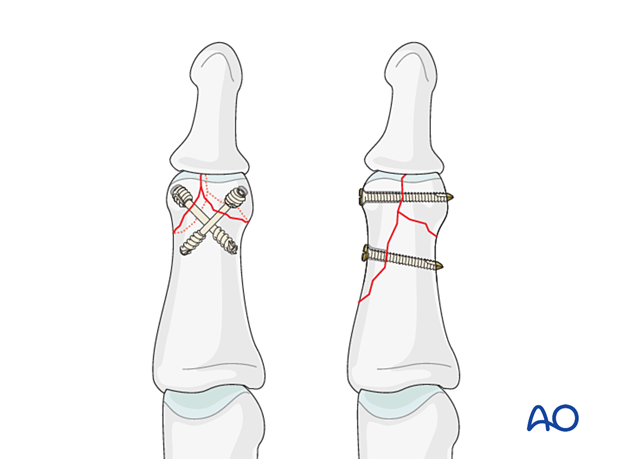
Since fragments in this segment are generally smaller than in the proximal phalanx, management and stabilization can be more of a challenge.
Tiny and fragile fragments can not be fixed with screws.
Anatomical reduction mandatory
Although the distal interphalangeal (DIP) joint is somewhat forgiving, articular fractures should be reduced anatomically. Otherwise, the articular cartilage may be damaged, leading to painful degenerative joint disease and digital deformity.
At the DIP joint, this can well be dealt with by arthrodesis, which is a procedure with very predictable outcome, without any major perturbances of the finger.
This illustration shows how even slight unicondylar depression may lead to angulation of the finger.
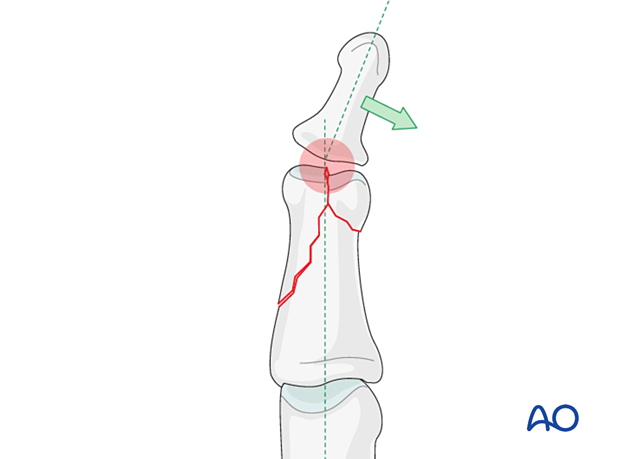
Outcome
Outcome of middle phalangeal fractures is usually more favorable than in the proximal phalanx. This is largely due to the fact that limitation of DIP joint motion is not such a disability as similar stiffness of the PIP and MCP joints.
2. Patient preparation
Place the patient supine with the arm on a radiolucent hand table.
WALANT is recommended to check stability of fixation and associated tendon lesions with active movement.
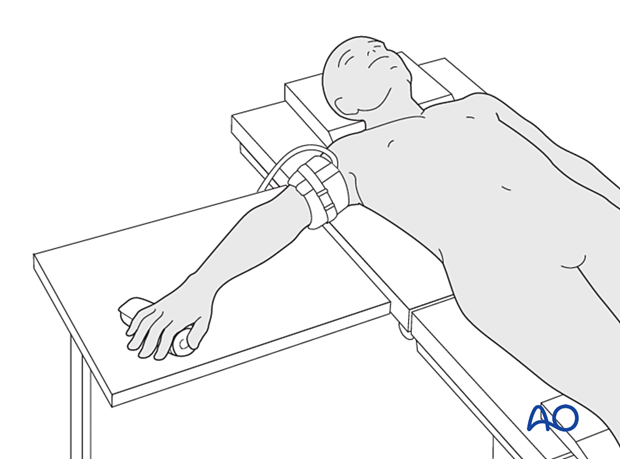
3. Approach
The fracture will have to be approached from the side of the larger fragment through a midaxial approach to the middle phalanx.
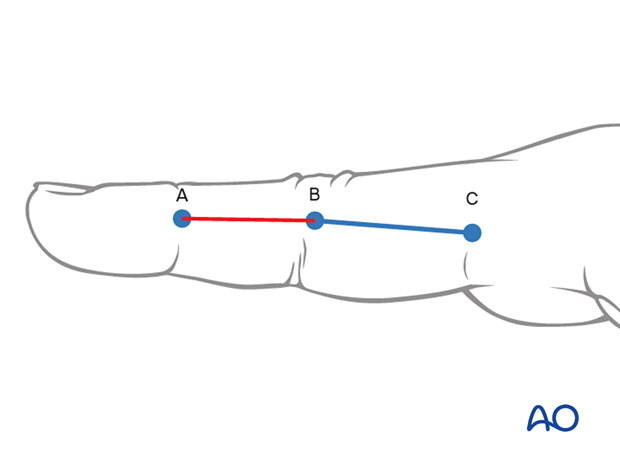
4. Reduction
Use a dental pick to gently explore the fracture site to assess its geometry. The pick can also be used carefully to reduce small fragments. Take great care to avoid comminution of any fragment.
It is important to maintain the vascularity of tiny fragments attached to the collateral ligament, to avoid osteonecrosis.
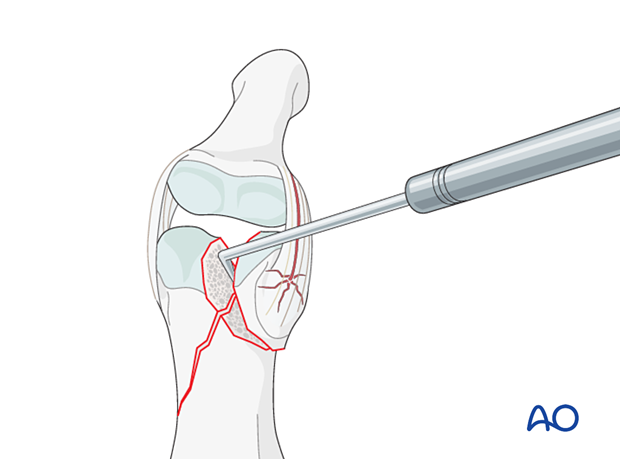
Reduction starts with traction to restore length.
Exert lateral pressure with your thumb and index finger or with dedicated percutaneous reduction forceps to reduce the fracture.
Confirm reduction with an image intensifier.
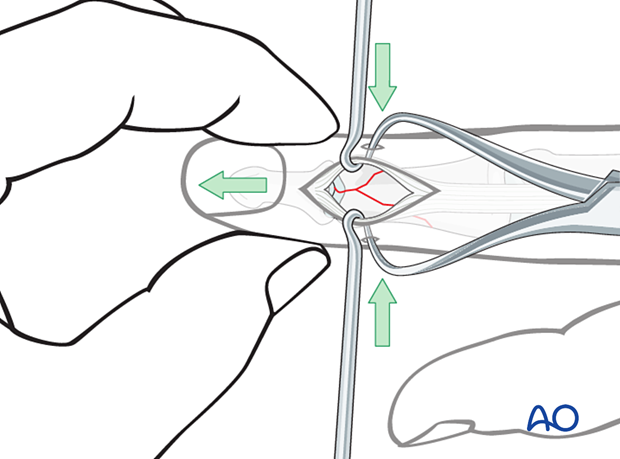
Small pointed reduction forceps can be used for larger fragments gently to rock the fracture from side to side. Be careful not to apply excessive force as this can lead to fragmentation.
Confirm reduction with an image intensifier.
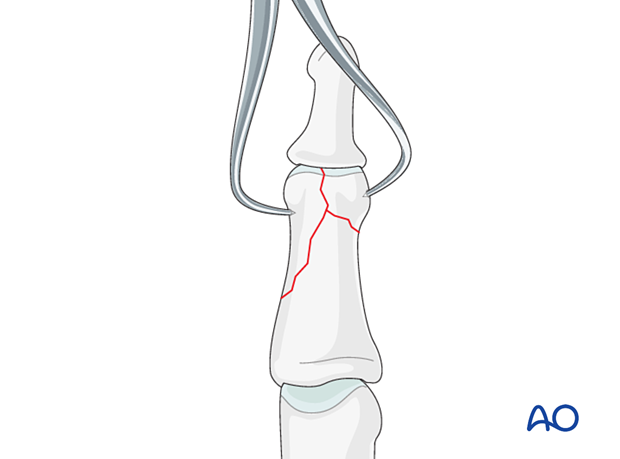
Small intraarticular defect
In some cases, a small additional intraarticular fragment is present. This fragment can be excised, but its removal will preclude the use of a lag screw between the condyles.
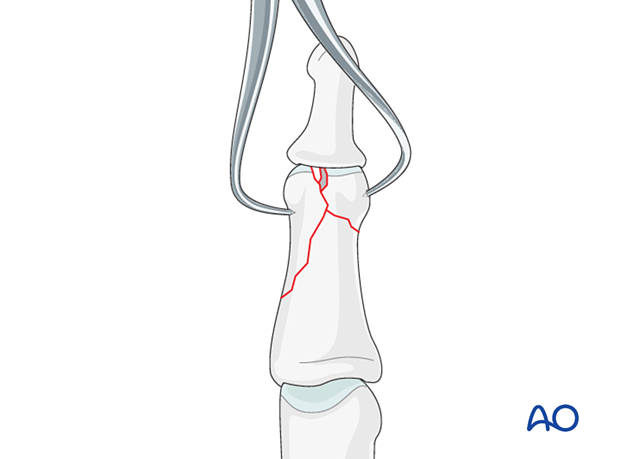
Preliminary fixation
Preliminarily fix the condyles by inserting a 0.8 mm K-wire, just deep to the subchondral bone. This avoids rotation of fragments during drilling and screw insertion. If a cannulated screw is planned, then the guide wire will serve for preliminary fixation.
Be careful to place the K-wire so it will not conflict with later screw placement.
Avoid inserting a K-wire into a small fragment, as it is in danger of fragmentation.
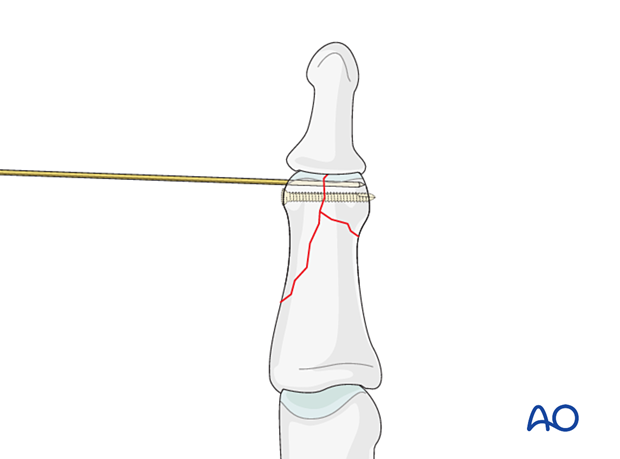
5. Fixation
Screw positioning
Ideally, 3 screws will be used to fix the larger fragment, although, more commonly, insertion of only 2 screws will be possible.
In a fracture with large fragments, some screws can be placed safely proximal to the collateral ligament.
Carefully evaluate the x-rays. When planning for the screws, assess the fracture plane and the size of the fragments. Keep in mind that the larger fragment must be at least as long as twice the diameter of the diaphysis if screw fixation alone is to be used.
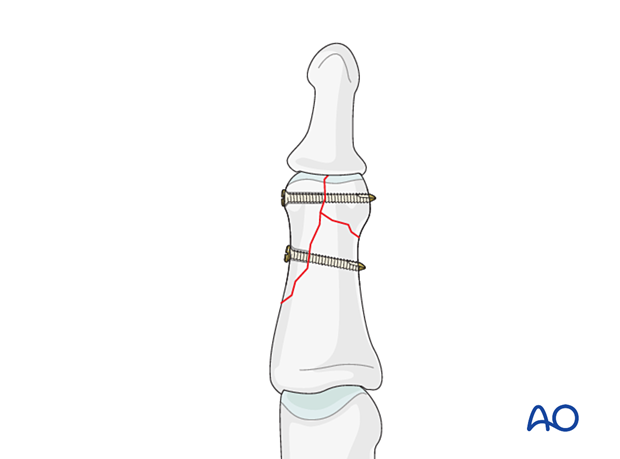
The position of the distal screw depends on the geometry of the fracture line which separates the condyles, and the size of the smaller fragment. This screw has to be planned carefully.
Vertical fracture plane: If the intercondylar fracture line is vertical, the lag screw will have to be inserted transversely, distal to the attachment of the collateral ligament, to cross the intercondylar fracture plane as perpendicularly as possible, and to secure the small fragment.
Oblique fracture plane: If the intercondylar fracture line is oblique, and the smaller fragment is large enough, the distal lag screw will be inserted obliquely, perpendicular to the intercondylar fracture plane, its point of entry being proximal to the attachment of the collateral ligament, and extraarticular.
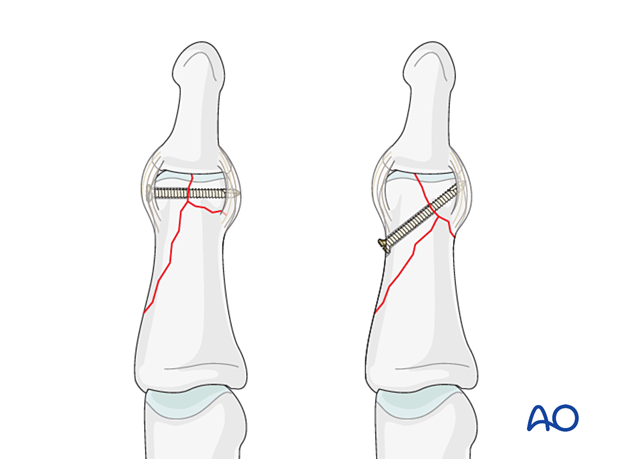
Screw length needs to be adequate for the screw just to penetrate the opposite cortex.
Keep in mind that at the apex of the fragment, the minimal distance between the screw head and the fracture line must be at least equal to the diameter of the screw head. If necessary, a screw of smaller diameter will have to be chosen.
A minimal distance from the fracture line, equal to the screw head diameter, must be observed.
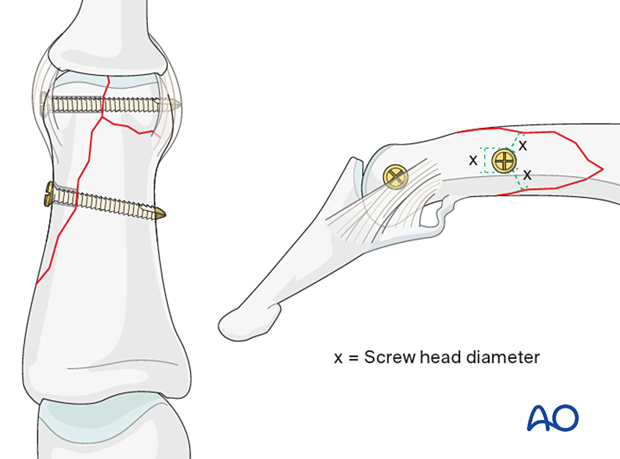
Screw size selection
The exact size of the diameter of the screws used will be determined by the fragment size and the fracture configuration.
The various gliding and thread hole drill sizes for different screws are illustrated here.
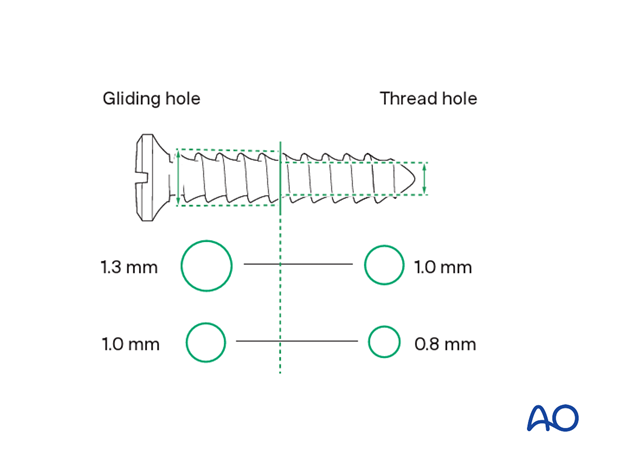
Pitfall: countersinking in the metaphysis
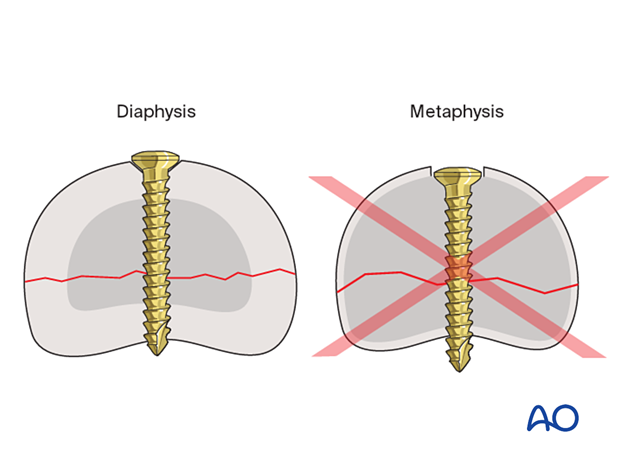
Screw length pitfalls
- Too short screws do not have enough threads to engage the cortex properly. This problem increases when self-tapping screws are used due to the geometry of their tip.
- Too long screws endanger the soft tissues, especially tendons, ligaments and neurovascular structures. With self-tapping screws, the cutting flutes are especially dangerous, and great care has to be taken that the flutes do not protrude beyond the cortical surface.
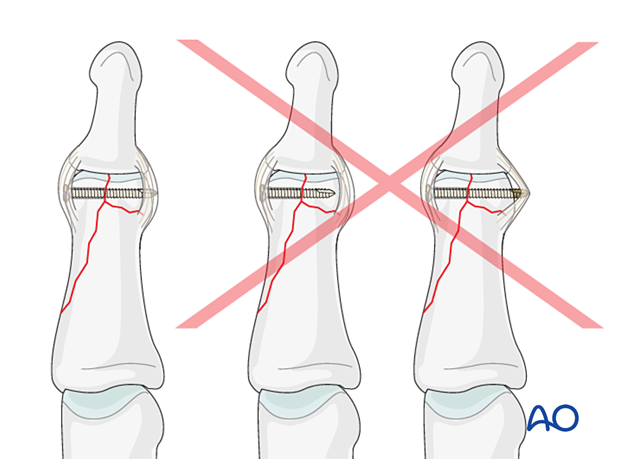
Pitfall: protruding screw head
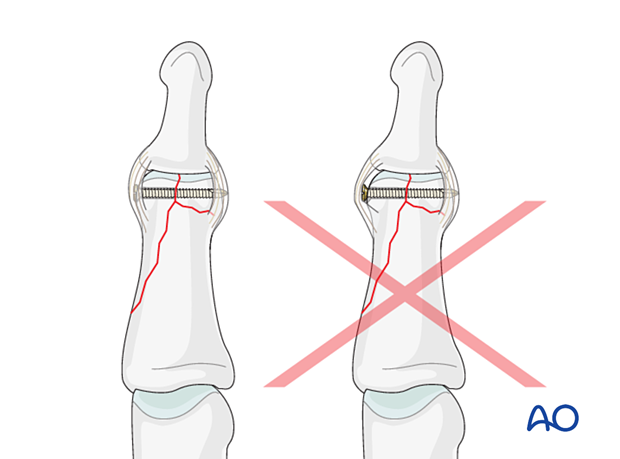
Screw insertion
Insert both screws before fully tightening them. Insert the distal screw first. The screw should just penetrate the opposite cortex.
Insert them as perpendicular as possible to the fracture plane.
Alternate tightening of the two lag screws helps avoid tilting the fragments and applies even compression forces over the whole fracture surface.
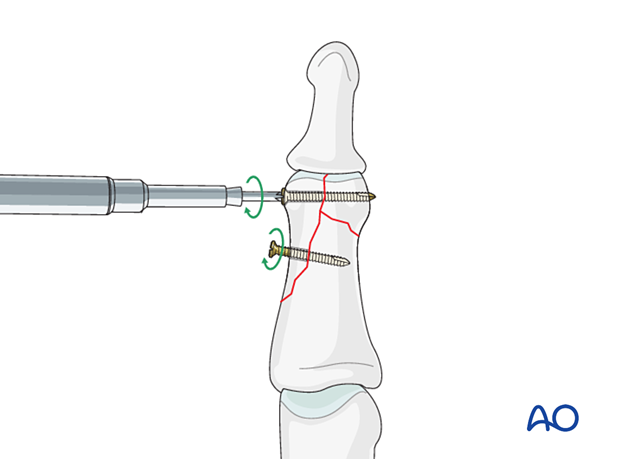
6. Fixation of small fragments
Screw positioning in small fragments
If only one screw can be inserted into each small fragment, they will have to be placed through the nonarticular face of the condyles, distal to the collateral ligament.
Insert lag screws according to the standard manner.
The screw tracks should be planned in different planes to avoid crossing each other.
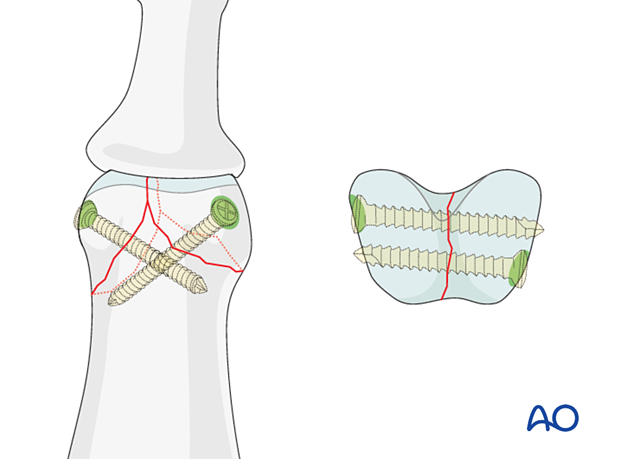
If the screw insertion comes to lay in or close to the articular surface, the screw head should be subchondral or else the use of a headless screw should be considered.
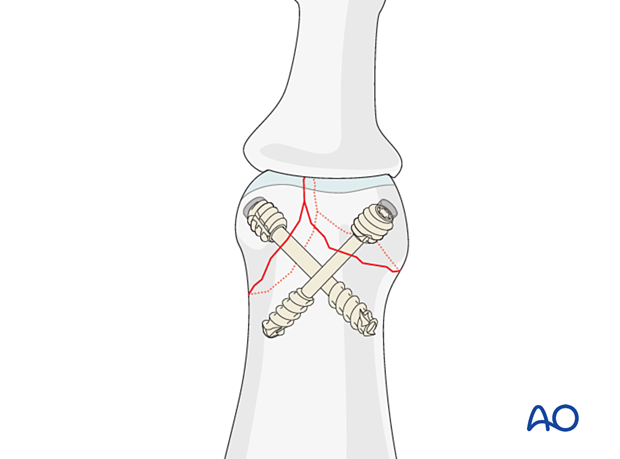
The lateral aspect of the phalangeal head, which is safe for screw placement, can be approached by flexing the proximal interphalangeal (PIP) joint.
The use of a headless cannulated screw is recommended to avoid ligament irritation due to a protruding screw head and eventual joint stiffness.
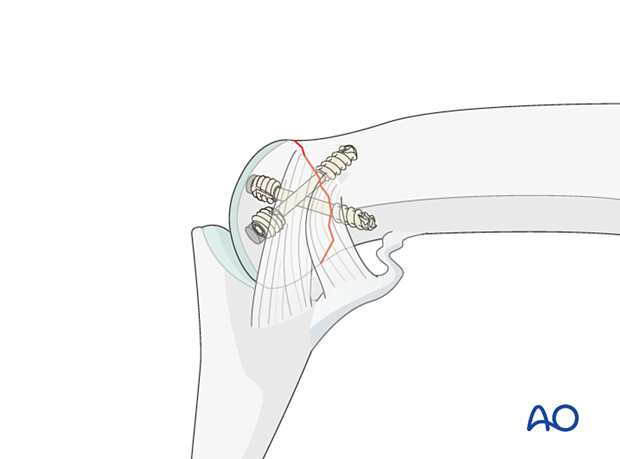
Determining screw size
Screw length needs to be adequate for the screw just to penetrate the opposite cortex.
Keep in mind that at the apex of the fragment, the minimal distance between the screw head and the fracture line must be at least equal to the diameter of the screw head. If necessary, a screw of smaller diameter will have to be chosen.
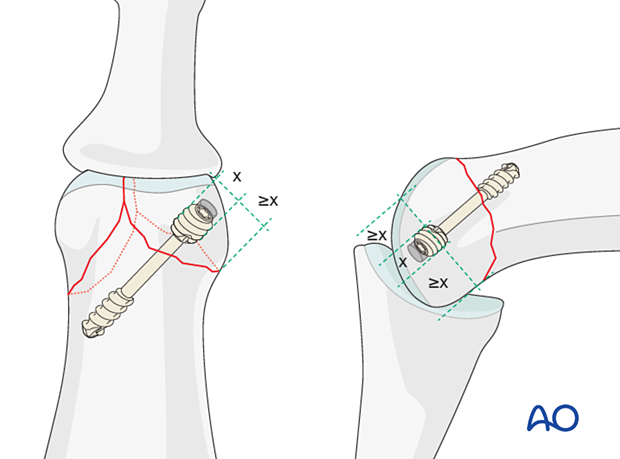
Screw insertion
Sparing the ligamentsMost of the fracture line on the lateral aspect of the head is covered by the collateral ligament.
Flexing the DIP joint will draw back the collateral ligament, which can be further retracted with a hook to expose the intraarticular lateral aspects of the condyles.
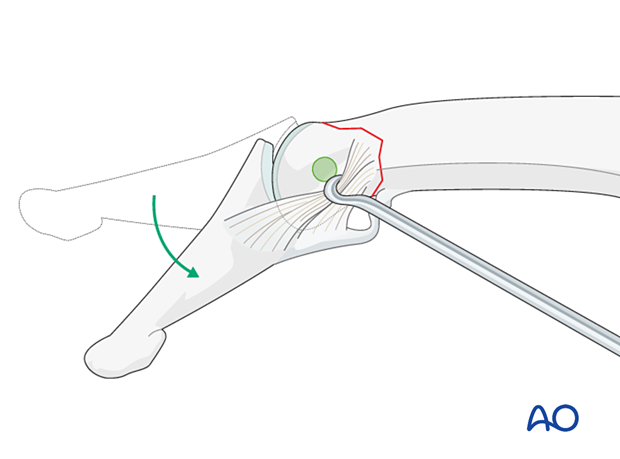
Location of the drill holes
On the lateral extraarticular aspects of the condyles, there is a small ridge on each side. These are uniquely suited for screw placement, as the screws can be buried deep to the edge of the cartilage without violating the joint surface and avoiding causing irritation.
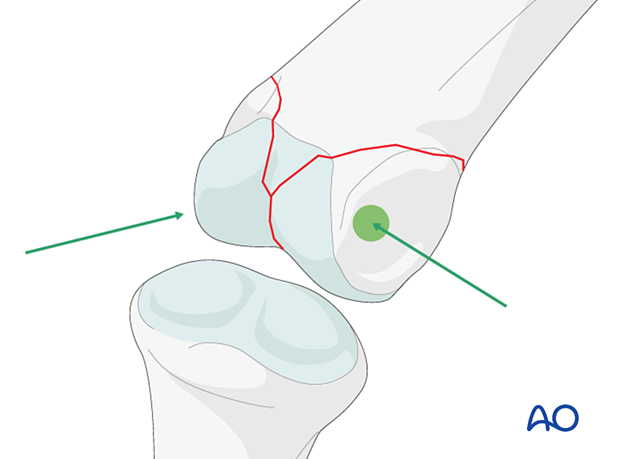
Before the first screw, insert both guide wires.
Confirm anatomical reduction of the articular surface and stability.
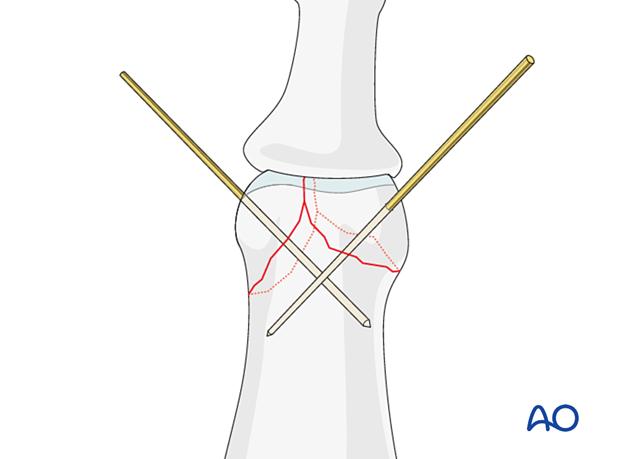
Insert the headless screws and gently tighten them to compress the fracture.
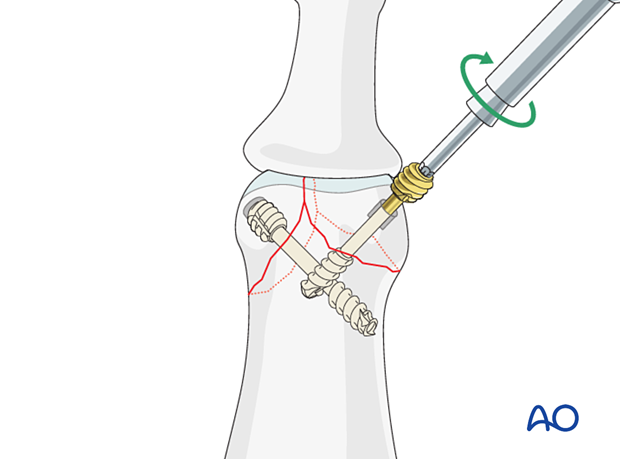
7. Final assessment
Confirm anatomical reduction and fixation with an image intensifier.
Check stability of the fixation by passive flexion and extension of the DIP joint, and by applying gentle lateral and rotational motion. This will help to determine stability to establish strategies for rehabilitation.
In rare cases, these fractures may be associated with tendon injuries. Assessment should exclude such complications.
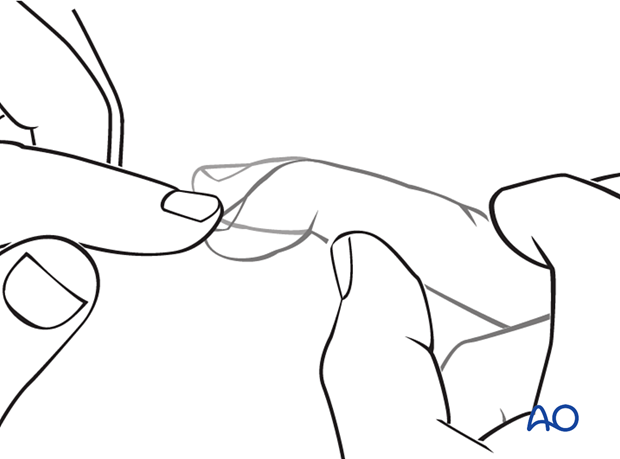
8. Aftercare
Postoperative phases
The aftercare can be divided into four phases of healing:
- Inflammatory phase (week 1–3)
- Early repair phase (week 4–6)
- Late repair and early tissue remodeling phase (week 7–12)
- Remodeling and reintegration phase (week 13 onwards)
Full details on each phase can be found here.
Postoperative treatment
If there is swelling, the hand is supported with a dorsal splint for a week. This should allow for movement of the unaffected fingers and help with pain and edema control. The arm should be actively elevated to help reduce the swelling.
The hand should be immobilized in an intrinsic plus (Edinburgh) position:
- Neutral wrist position or up to 15° extension
- MCP joint in 90° flexion
- PIP joint in extension
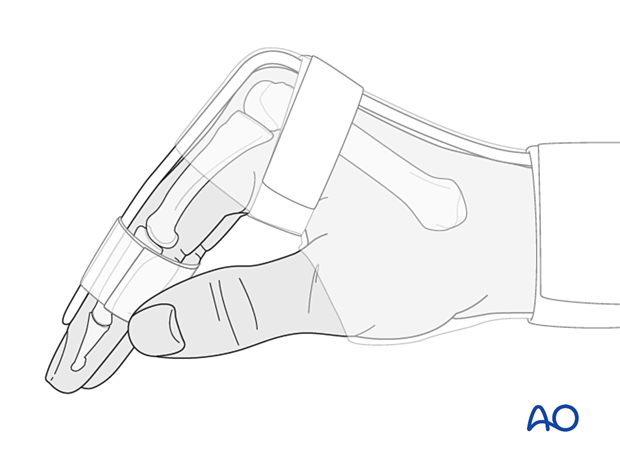
The MCP joint is splinted in flexion to maintain its collateral ligaments at maximal length to avoid contractures.
The PIP joint is splinted in extension to maintain the length of the volar plate.
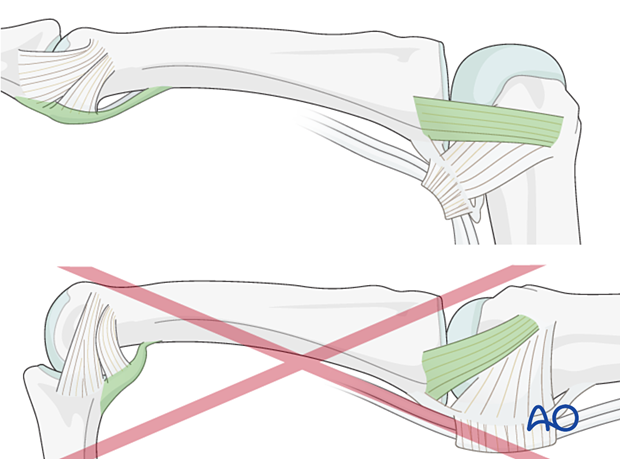
After swelling has subsided, the finger is protected with buddy strapping to neutralize lateral forces on the finger until full fracture consolidation.
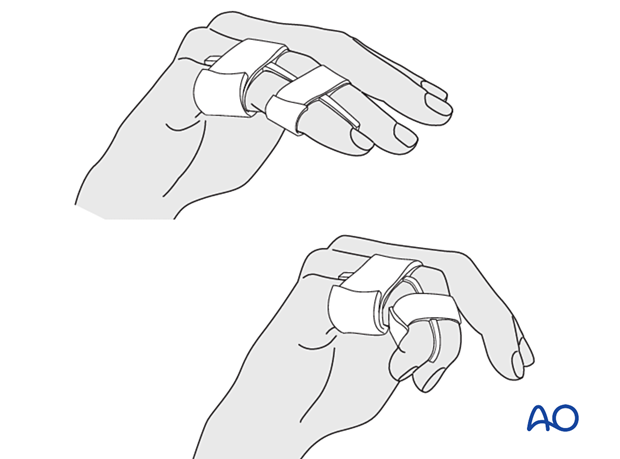
Mobilization
To prevent joint stiffness, the patient should be instructed to begin active motion (flexion and extension) of all nonimmobilized joints immediately after surgery.

Follow-up
The patient is reviewed frequently to ensure progression of hand mobilization.
In the middle phalanx, the fracture line can be visible in the x-ray for up to 6 months. Clinical evaluation (level of pain) is the most important indicator of fracture healing and consolidation.
Implant removal
The implants may need to be removed in cases of soft-tissue irritation.
In case of joint stiffness or tendon adhesion restricting finger movement, arthrolysis or tenolysis may become necessary. In these circumstances, the implants can be removed at the same time.












